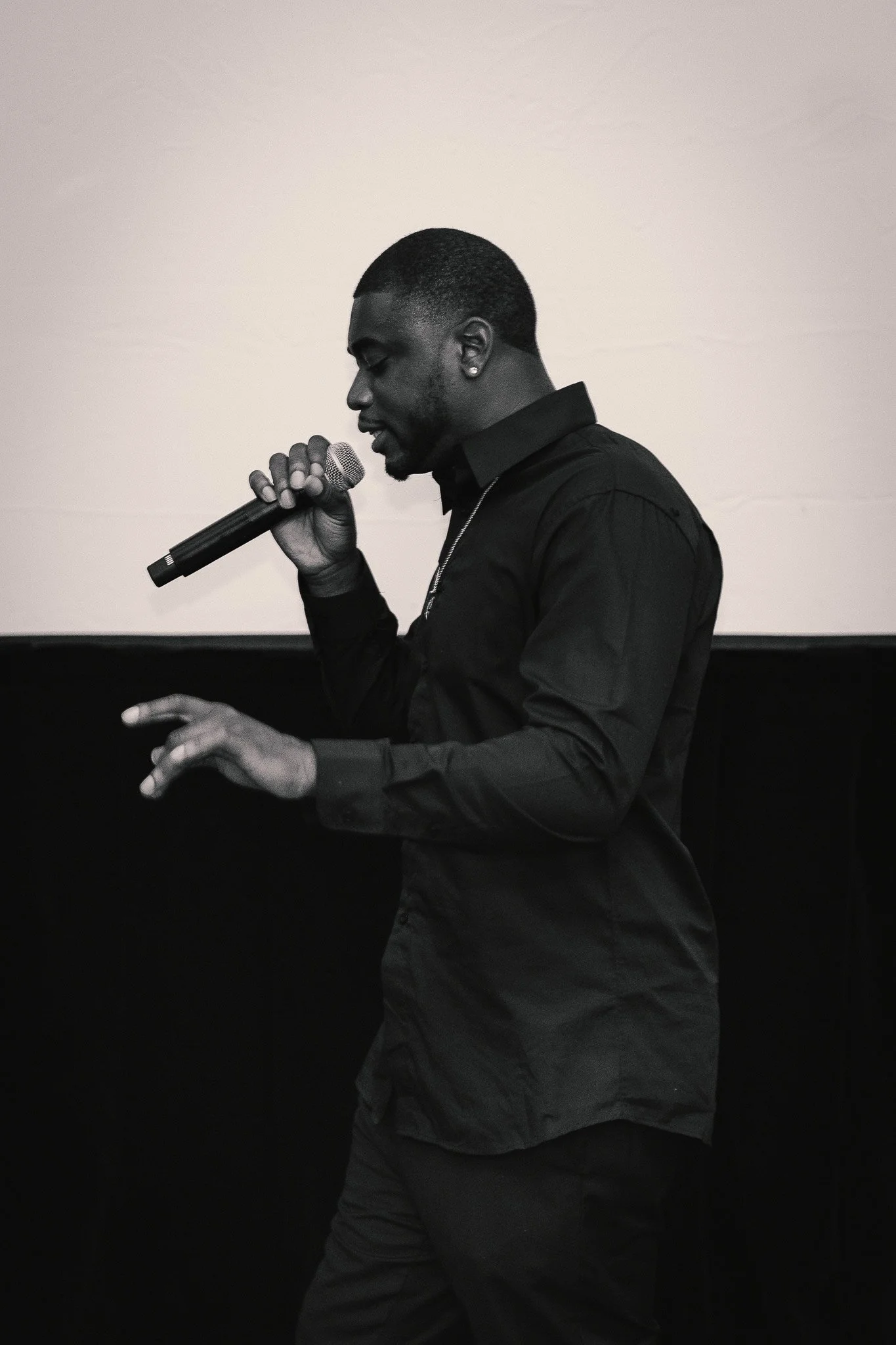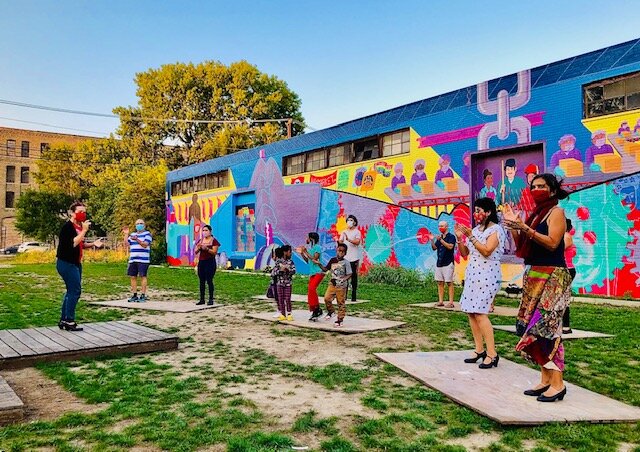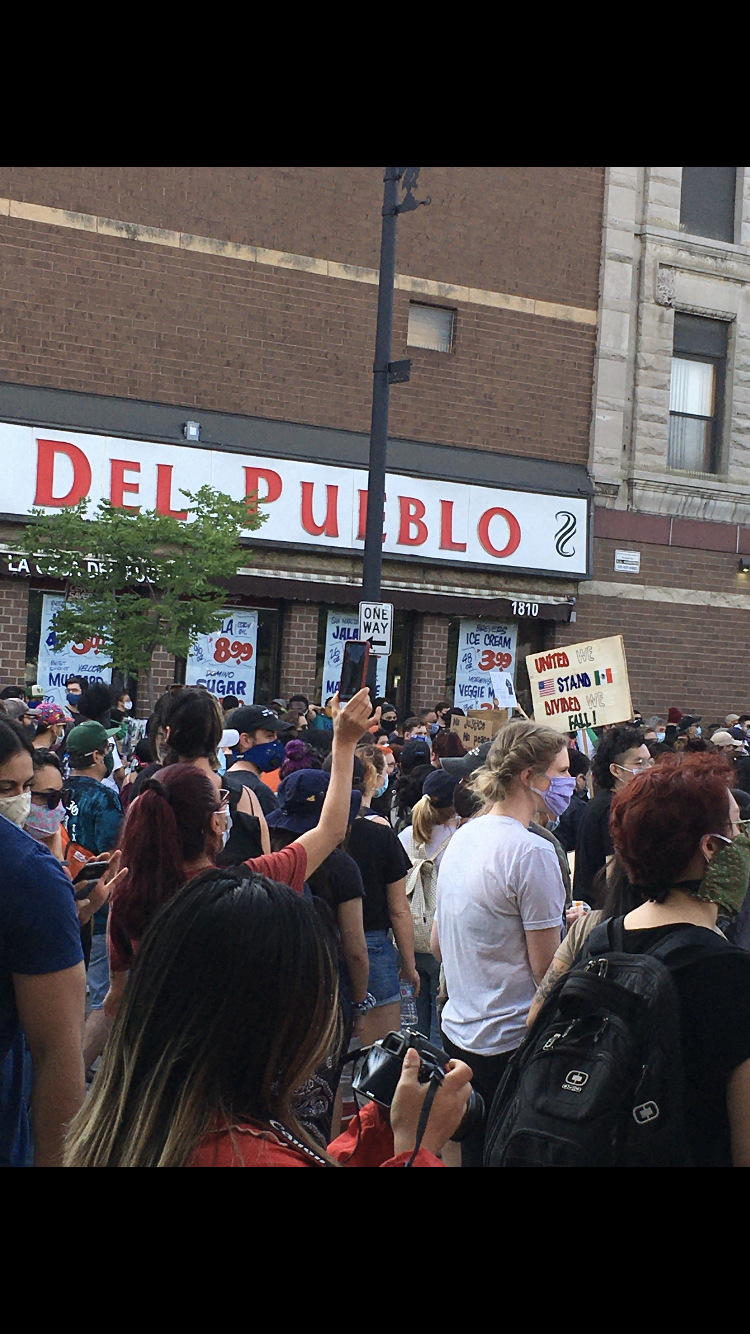Interview with Steve Gibons and Camilo Rincon - Flamenco Quartet Project
/Clinard Dance recently conducted an interview with our Flamenco Quartet Project in anticipation of our March 9th 2020 show at Space in Evanston, Illinois. This interview touches on the history of flamenco, the range of influences that inform the ensemble’s performances, their approaches to collaboration, and insights from their audiencing experiences. Interviewed here is violinist and ensemble member Steve Gibons and guest guitarist Camilo Rincon.
Camilo Rincon
Camilo Rincon is a Son Jarocho (traditional Mexican music) musician and music teacher who teaches jarana, requinto (traditional guitars), singing and dance. He believes in creating engaging classes that foster strong essential musical skills to develop students’ musical confidence. His musical education background is based largely in working with the musical group and community building project, Jarochicanos (since 2008). He currently studies classical guitar at Northeastern Illinois University. Camilo has played in various musical ensembles focusing on the styles of: Mexican music, Cuban son, Latin jazz, classical guitar and he has toured in the U.S. and Mexico.
Steve Gibons
Jazz and ethno violinist Steve Gibons is regular at the Green Mill with Alfonso Ponticelli and Swing Gitan, and other Chicago jazz venues (Jazz Showcase, Katerina’s) and leads the Gypsy Rhythm Project, a collaboration of Roma and Chicago jazz players. Gibons also plays with Il-Bulbul Classical Arabic Ensemble, a classical Arabic chamber group, and has traveled widely, making field recordings in the Balkans, and has absorbed music from a host of different cultures: Blues and Jazz from his home town, Chicago, Roma (Gypsy) and folk music from Southeast Europe, Klezmer from Central Europe, Classical Arabic Music from the Middle East, Western European Gypsy Jazz from France.
Clinard Dance [CD]: Flamenco draws in several musical traditions and practices. What are some influences that inform the Flamenco Quartet Project?
Steve Gibons [SG]: I've traveled in countries where music I'm interested in has evolved, and much of what I've absorbed comes out in my improvisations and writing. I draw on music from the Arab world, Eastern Europe, Roma music, including Flamenco and Gypsy Jazz, Blues, American Jazz and folk music and Western classical music.
[CD]: Camilo, as a guitarist, one strand of musical practice that you focus on is Son Jarocho. Tell us more about the tradition.
Camilo Rincon [CR]: The musical tradition of Son Jarocho is from the Gulf Coast of Mexico-Veracruz, parts of Oaxaca and Tabasco and is a tradition that is born of the mixture of cultures that occurred when Spaniards, Arabs, and Africans interacted with the indigenous populations of Mexico.
[CD]: What artistic connections do you make between Son Jarocho and flamenco?
[CR]: The musical languages of the guitars in Son Jarocho draw on some of the same ideas that flamenco guitars use. An example is that certain rhythms like the Guajira (used in flamenco) are very similar to the "Sones de Monton" (literally translated as “songs danced by pairs of women”; a rhythmic base in Son Jarocho). The element of dance (baile) as a crucial part in the development of musical elements is another commonality between Son Jarocho and the musical traditions of Flamenco.
[CD]: This is your first time performing with the Flamenco Quartet Project, Camilo. The last time you worked with Clinard Dance was as a collaborator in the Everyday People Everyday Action production. Audiences may recall an element of dance in your playing, a swaying and lilting, as you musically fit into and the production’s co-unity of flamenco, hip-hop, beat-boxing, and photographic dance and music. How have you approached these new and multidisciplinary creative experiences?
[CR]: Both flamenco and Son Jarocho have improvisation in their D.N.A.; there is a shared understanding and excitement when improvising that helps when working with either the Flamenco Quartet Project or in a Clinard Dance production. In my view, we all bring our own "collaboration library" – experiences, ideas and aesthetics – to these collaborations. The open minds of my fellow musicians, and the love of the art of music and dance help us to arrive at exciting sounds that we would not otherwise reach alone. In addition to Son Jarocho, examples of some of my musical influences that have emerged in working in these collaborations include: the shaping of dynamics and textures (classical guitar), restraint and the powerful effect of subtlety (Jazz and Free Jazz) and rhythmic variation in musical phrases (Cuban "Son Cubano").
[CD]: How does the ensemble expand and narrow its focus on this rich pool of musical influences and experiences, these “collaborative libraries”?
[SG]: One method we use to create our music relies on using a very small amount of source materials, which are used to seed score ideas. Wendy might play a clip of music for us that she wants to use for a choreography, or ask to hear a traditional song from a certain culture. She'll ask us to play it this way or that, to try out dynamics, for example, or play with duration, and lets us know when she hears something something she likes or finds interesting. Then we try to inventory it. In this sense we play the role of human midi sequencers.
[CD]: There seems to be resonance between Camilo’s view of “collaboration libraries” and this description of the “inventory” process – a notion of collectively constructing, storing, and accessing a shared and living archive. How might audiences attending the March 9th show notice this interplay – the shared collection of references (experiences, ideas, and aesthetics) and their musical relationships?
[SG]: One technique we use is to work from an extant piece of music as a skeletal structure, and build it out by breaking it up and inserting sections to accommodate the choreography for a palo or cante.
[CD]: When you are an audience member, are there aspects of the art that you tend to focus on or gravitate towards, and if so, are their ways that these sensitivities feed back into your own performances?
[CR]: I enjoy watching how musicians converse through sound and movement. The way, for example, that the instruments respond to the dancing draws me in because you don't know what will happen next! I also feel that when watching great performers the dramatic climaxes whether they be exuberant or intensely sad are so palpable. The experience is similar to watching an incredible film: you forget that you're watching something and you feel so moved you access a part of your soul that makes you free. The liberating experience of listening to flamenco motivates me to create art that is profound, authentic and deeply personal so that it can be meaningful and moving to those who listen.



























